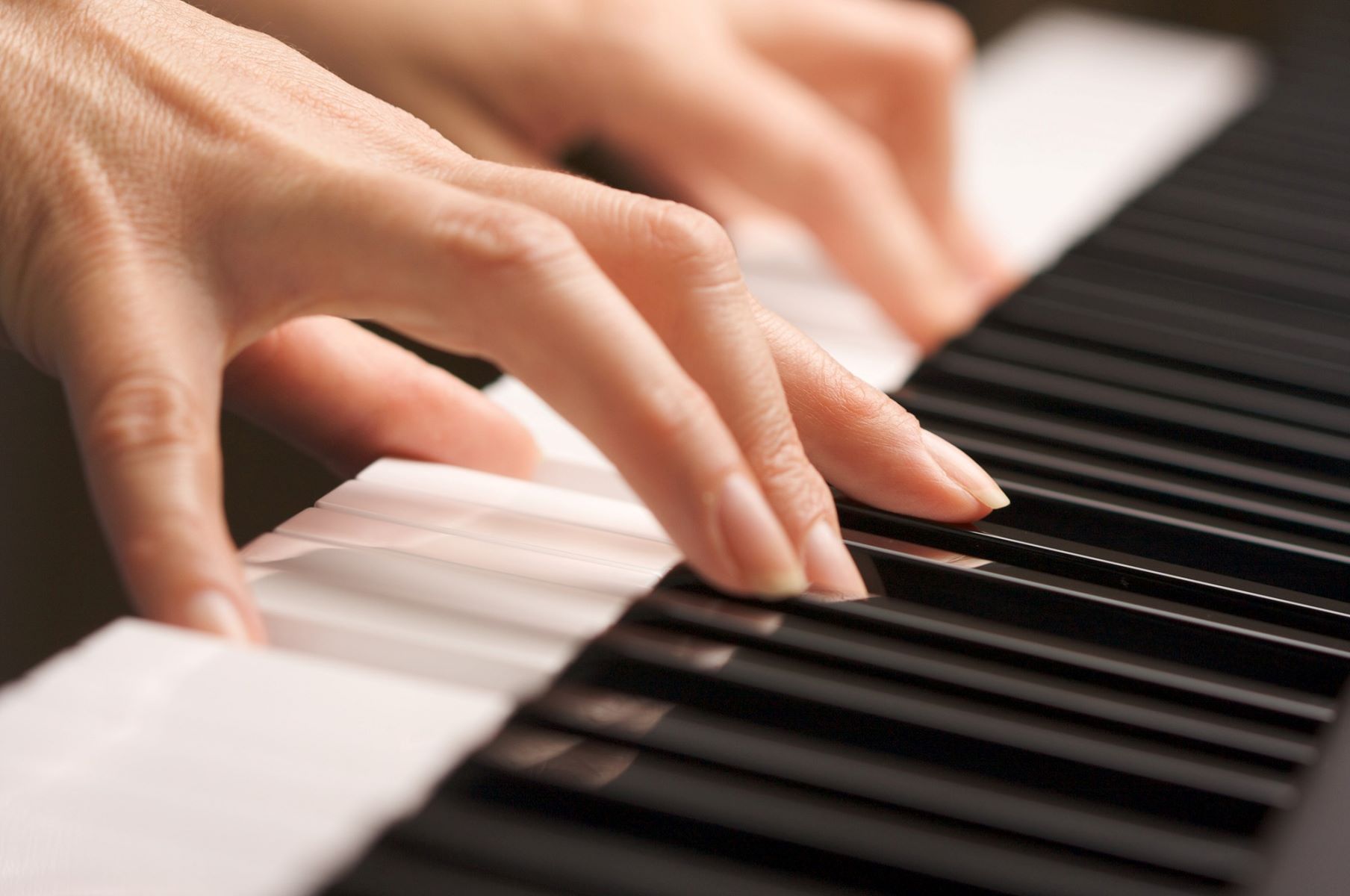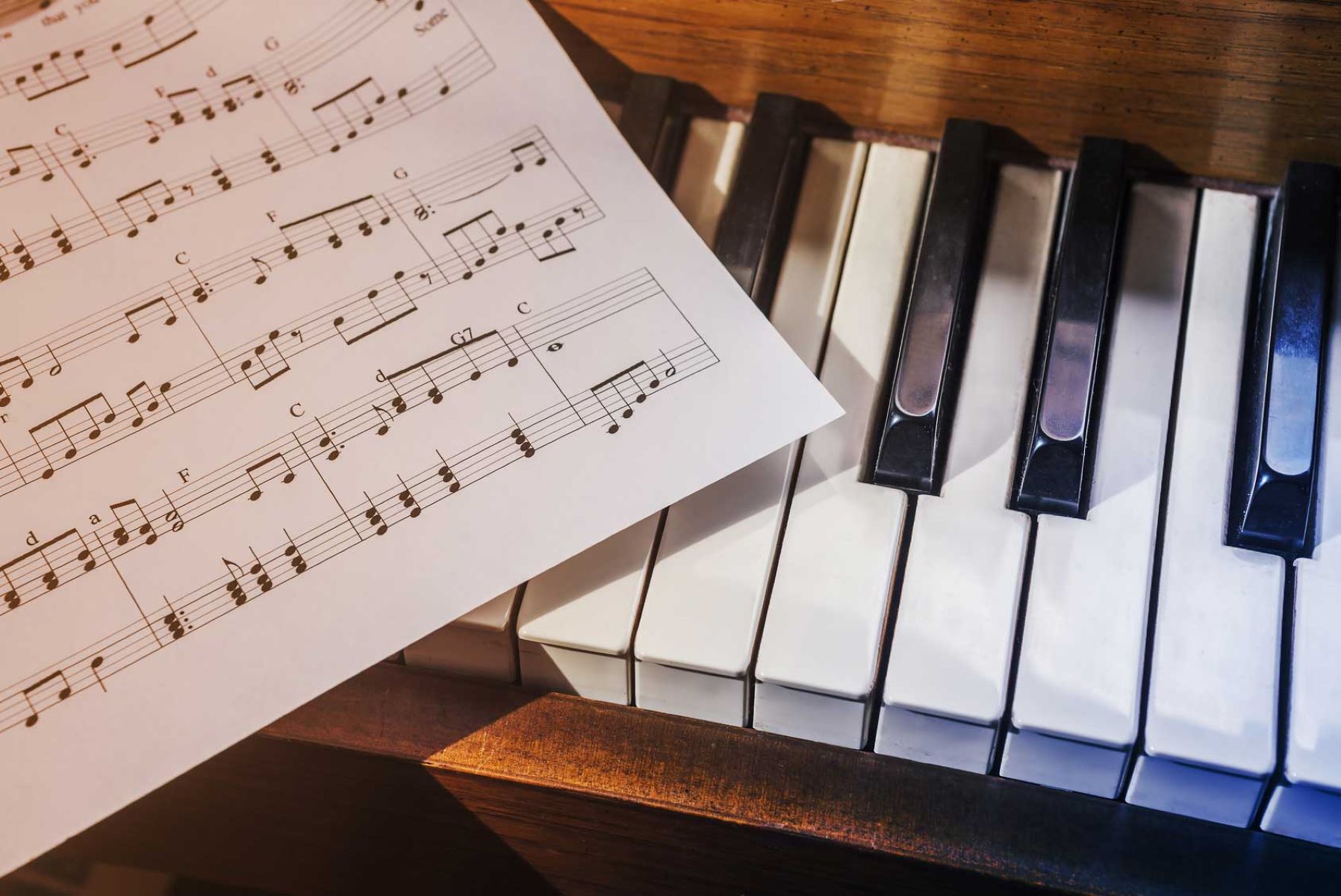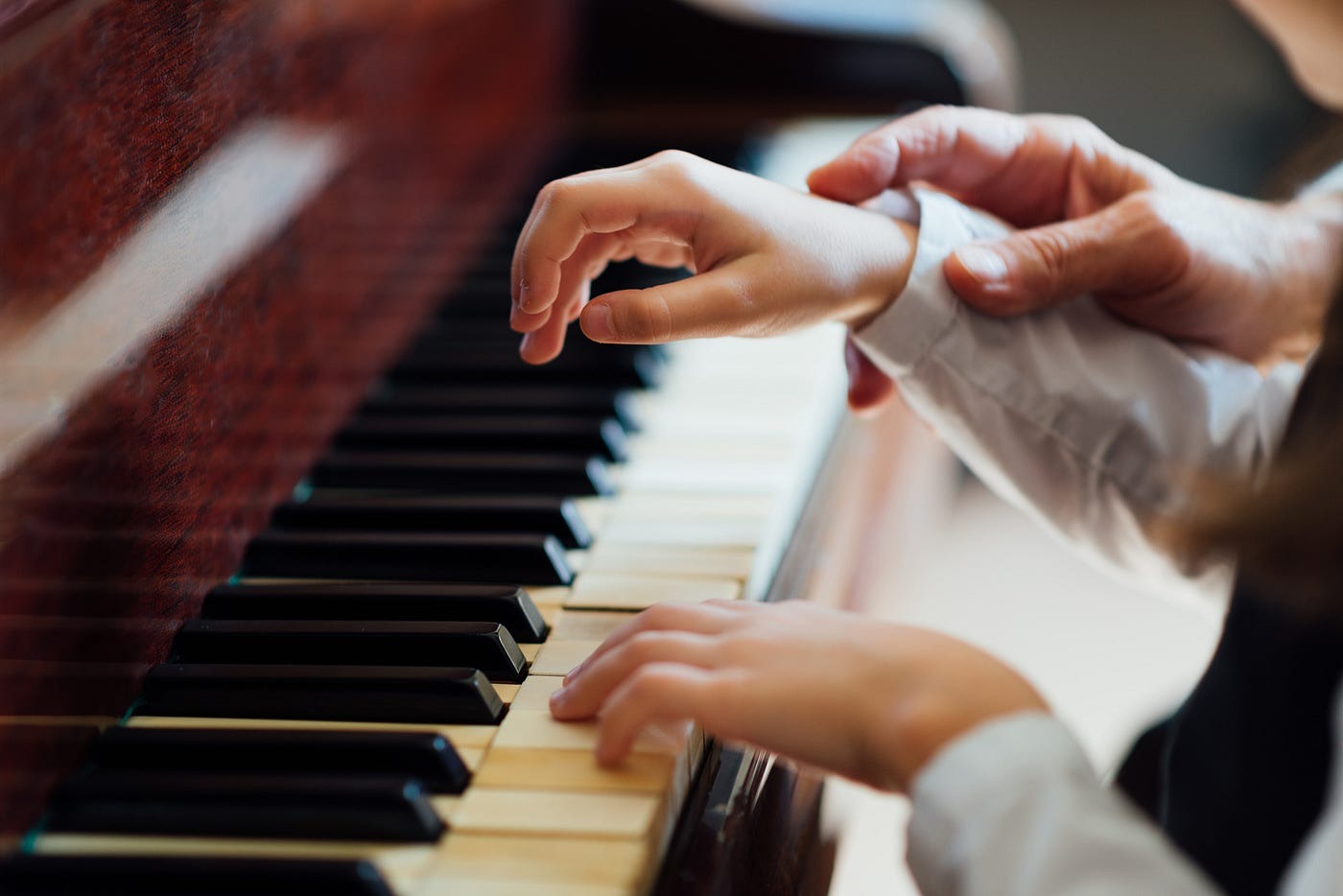Home>Instruments>Piano>How To Learn Piano By Yourself


Piano
How To Learn Piano By Yourself
Modified: February 11, 2024
Learn how to play piano by yourself with our comprehensive guide. Master the piano at your own pace with our expert tips and techniques.
(Many of the links in this article redirect to a specific reviewed product. Your purchase of these products through affiliate links helps to generate commission for AudioLover.com, at no extra cost. Learn more)
Table of Contents
Introduction
Learning to play the piano is a rewarding journey that can bring immense joy and fulfillment. Whether you're a complete beginner or someone with some musical background, embarking on the path of self-taught piano mastery can be an enriching experience. By harnessing your passion for music and leveraging the wealth of resources available, you can develop a strong foundation and progress at your own pace.
The allure of mastering this timeless instrument lies in its ability to evoke emotions, tell stories, and create beautiful melodies. With dedication, patience, and the right approach, you can unlock your musical potential and enjoy the art of piano playing.
In this comprehensive guide, we will delve into the essential steps and strategies for learning the piano independently. From setting up your practice space to understanding basic music theory, mastering finger exercises, and exploring a variety of resources, this guide aims to equip you with the knowledge and tools necessary to embark on your musical journey.
Whether you aspire to play classical compositions, jazz standards, or contemporary pop tunes, the fundamentals of piano playing remain consistent. By following the guidance provided in this article, you can lay a solid groundwork for your musical endeavors and cultivate a lifelong passion for the piano.
As we navigate through the various aspects of self-taught piano learning, remember that progress is a personal journey. Embrace the process, celebrate small victories, and stay committed to your musical growth. With a positive mindset and a willingness to learn, you can embark on a fulfilling and enriching musical odyssey.
Setting Up
Creating an inviting and conducive practice environment is crucial when learning the piano. Whether you have a digital keyboard or an acoustic piano, setting up your practice space thoughtfully can significantly impact your learning experience. Here are some key considerations:
- Instrument Placement: Position your piano or keyboard in a well-lit and comfortable area of your home. Ensure that the instrument is at a suitable height, allowing for proper posture and hand positioning while playing.
- Seating: Invest in a sturdy and adjustable piano bench or chair that promotes good posture. Maintaining an ergonomic seating position is essential for long practice sessions and overall comfort.
- Accessories: Keep essential accessories such as a metronome, music stand, and proper lighting within reach. These tools can enhance your practice routine and contribute to a focused and organized learning environment.
- Inspiration: Personalize your practice space with elements that inspire and motivate you. Whether it’s musical artwork, motivational quotes, or a collection of your favorite sheet music, surrounding yourself with inspiration can fuel your passion for playing the piano.
By thoughtfully arranging your practice space, you can cultivate a welcoming and organized environment that supports your musical journey. Additionally, consider the acoustic properties of the room and explore options for sound optimization, especially if you own an acoustic piano.
Remember, your practice space is where you will spend countless hours honing your skills and exploring the intricacies of piano playing. By setting up a comfortable and inspiring environment, you can lay the groundwork for productive practice sessions and musical growth.
Basic Music Theory
Understanding the fundamentals of music theory is essential for any aspiring pianist. While it may seem daunting at first, grasping basic music theory concepts can significantly enhance your ability to read and interpret music, improvise, and comprehend the underlying structure of compositions. Here are key elements of music theory to focus on:
- Notes and Rhythms: Familiarize yourself with the layout of the piano keyboard and the corresponding notes. Learn to identify different note values, such as whole notes, half notes, and quarter notes, and understand rhythmic patterns and time signatures.
- Scales and Intervals: Dive into the world of scales and intervals, which form the building blocks of melodies and harmonies. Practice playing major and minor scales, and explore the concept of intervals to develop a strong ear for musical distances between notes.
- Chords and Chord Progressions: Delve into the construction of chords and chord progressions, essential components of harmony in music. Understanding how chords are formed and their relationships within a progression will expand your musical vocabulary and improvisational skills.
- Key Signatures and Notation: Learn to recognize key signatures and understand how they affect the overall tonality of a piece. Familiarize yourself with standard music notation, including clefs, dynamics, and articulations, to interpret musical scores accurately.
While delving into music theory, apply your newfound knowledge directly to the piano. Practice playing scales, arpeggios, and simple melodies while consciously applying the theoretical concepts you’ve learned. This hands-on approach will solidify your understanding and bridge the gap between theory and practical application.
Remember, music theory serves as a powerful tool that unlocks the language of music. Embrace the learning process and view music theory as a gateway to expressing yourself more fluently through the piano.
Finger Exercises
Developing dexterity and strength in your fingers is crucial for navigating the piano with ease and precision. By incorporating targeted finger exercises into your practice routine, you can enhance your technical abilities and lay a solid foundation for more advanced playing. Here are some effective finger exercises to integrate into your daily practice:
- Scales and Arpeggios: Practice major and minor scales in all keys, focusing on smooth and even finger transitions. Additionally, work on arpeggios to strengthen finger independence and agility.
- Hanon Exercises: Explore the renowned Hanon exercises, which are designed to improve finger strength, control, and agility. These exercises target specific finger patterns and are invaluable for building technical proficiency.
- Chromatic Exercises: Incorporate chromatic exercises to promote evenness and coordination across all fingers. Utilize various patterns and finger combinations to challenge and refine your digital dexterity.
- Trills and Tremolos: Practice trills and tremolos to develop rapid finger movements and control. These techniques are essential for executing ornamental passages with fluency and precision.
Consistent and focused practice of these exercises will yield noticeable improvements in your finger strength, agility, and overall control at the piano. It’s important to approach these exercises with patience and mindfulness, paying attention to proper hand posture and ergonomic movements to prevent strain or injury.
Remember, the goal of finger exercises is not just mechanical proficiency, but also the development of expressive and nuanced playing. As you dedicate time to these exercises, strive for a balance between technical precision and musicality, infusing each exercise with dynamics and phrasing to cultivate a well-rounded pianistic technique.
Learning Scales and Chords
Mastering scales and chords is a foundational element of piano playing, providing the groundwork for understanding harmony, improvisation, and musical structure. By dedicating time to learning and practicing scales and chords, you can expand your musical vocabulary and develop a deeper connection to the keyboard. Here’s how to approach these essential components:
- Major and Minor Scales: Begin by familiarizing yourself with major and minor scales, starting with the key of C major and A minor. Gradually work through all keys, paying attention to fingerings and the unique characteristics of each scale.
- Chord Construction: Explore the construction of basic triads, including major, minor, augmented, and diminished chords. Understand the intervals that form each chord and practice playing them across the keyboard.
- Chord Inversions: Delve into chord inversions, which involve reordering the notes of a chord. Mastering inversions enhances your ability to create smooth and harmonically rich progressions while maintaining fluid hand movements.
- Harmonic Progressions: Study common chord progressions found in various musical genres. Practice transitioning between chords fluidly and experiment with creating your own progressions to internalize harmonic relationships.
When learning scales and chords, strive for a balance between technical accuracy and musical expression. While precision is essential, infuse your practice with dynamics and phrasing to imbue each scale and chord progression with musicality.
Additionally, seek opportunities to apply scales and chords in the context of actual pieces of music. Analyze how composers utilize these harmonic elements and observe their role in shaping melodic and harmonic content. By integrating scales and chords into your repertoire, you’ll gain a deeper understanding of their significance in the broader musical landscape.
Remember, scales and chords serve as the building blocks of music, offering a wealth of creative possibilities and avenues for self-expression at the piano. Embrace the process of mastering these fundamental elements, and view them as powerful tools that enrich your musical journey.
Practicing Techniques
Effective practice techniques are essential for honing your piano skills and making meaningful progress on your musical journey. By approaching your practice sessions with intention and focus, you can maximize your learning potential and cultivate a deeper connection to the instrument. Here are key strategies to enhance your practicing:
- Structured Practice Sessions: Organize your practice sessions into focused segments, dedicating time to technical exercises, repertoire, sight-reading, and musical interpretation. Structuring your practice promotes a well-rounded development of skills.
- Slow and Deliberate Practice: Embrace slow and deliberate practice when learning new pieces or refining challenging passages. Pay close attention to articulation, dynamics, and phrasing, ensuring a thorough understanding of the musical nuances.
- Utilize a Metronome: Incorporate a metronome into your practice to develop a strong sense of rhythm and precision. Gradually increase the tempo as you master challenging passages, maintaining clarity and control.
- Memory Work: Engage in memory work by gradually memorizing pieces you are learning. This process strengthens your musical memory and deepens your connection to the music, fostering a more expressive performance.
- Practice Away from the Piano: Mental practice away from the piano can complement your physical practice. Visualize passages, fingerings, and overall musical structure, reinforcing your understanding of the music.
It’s important to approach each practice session with a positive and focused mindset, embracing the opportunity for growth and improvement. By maintaining a consistent and dedicated practice routine, you’ll witness tangible progress in your playing and musical understanding.
Furthermore, seek opportunities to vary your practice approach, incorporating creativity and exploration into your sessions. Experiment with different interpretations of musical pieces, explore improvisation, and engage in collaborative music-making to broaden your musical horizons.
Remember, effective practice goes beyond mere repetition; it involves mindful engagement with the music, fostering a deep connection to the expressive possibilities of the piano. Embrace the process of practice as a fulfilling and enriching endeavor, and celebrate the incremental achievements that propel your musical growth.
Finding Resources
Accessing a diverse range of resources can greatly enrich your self-taught piano journey, providing valuable guidance, inspiration, and learning opportunities. Whether you prefer traditional instructional materials or digital platforms, a wealth of resources awaits to support your musical growth. Here are key avenues to explore when seeking piano learning resources:
- Online Tutorials and Courses: Explore reputable websites and platforms offering structured piano tutorials and courses. These resources often cater to various skill levels and musical genres, allowing you to learn at your own pace.
- Sheet Music and Method Books: Acquire a collection of sheet music and method books tailored to your musical interests and skill level. These resources provide a wealth of repertoire, technical exercises, and theoretical knowledge.
- Video Demonstrations and Performances: Watch video demonstrations by accomplished pianists, as well as performances of diverse musical styles. Observing skilled musicians can offer valuable insights into technique, interpretation, and musical expression.
- Music Theory Resources: Explore books, websites, and apps dedicated to music theory, ear training, and sight-reading. Strengthening your theoretical foundation enhances your overall musicianship and understanding of the piano.
- Online Communities and Forums: Engage with online piano communities and forums to connect with fellow learners, seek advice, and share musical experiences. These platforms provide a supportive network and a space for collaborative learning.
Additionally, consider seeking guidance from experienced piano teachers or mentors who can offer personalized feedback and tailored learning plans. While pursuing self-taught learning, periodic guidance from knowledgeable individuals can provide valuable insights and help navigate challenges effectively.
Embrace a spirit of curiosity and exploration as you discover and leverage diverse resources to enhance your piano journey. Each resource presents an opportunity for growth and inspiration, contributing to a well-rounded and fulfilling musical education.
Setting Goals
Setting clear and achievable goals is a pivotal aspect of your self-taught piano journey, providing direction, motivation, and a sense of accomplishment as you progress. By establishing meaningful objectives, you can chart a path for your musical development and measure your advancement effectively. Here’s how to approach goal setting in the context of piano learning:
- Define Long-term Aspirations: Envision your long-term musical aspirations, whether it’s mastering a specific repertoire, performing publicly, or composing original music. Identifying overarching goals provides a sense of purpose and direction.
- Break Down Goals into Milestones: Divide your long-term goals into smaller, manageable milestones. For example, learning a challenging piece, mastering technical exercises, or understanding complex music theory concepts can serve as tangible milestones along your journey.
- Establish Practice Targets: Set specific practice targets, such as dedicating a certain amount of time to technical exercises, learning new repertoire, or refining particular musical skills. Structuring your practice routine around targeted objectives fosters consistent progress.
- Embrace Flexibility and Adaptability: Remain open to adjusting your goals based on your evolving musical interests and skill development. Flexibility allows you to adapt to new opportunities and challenges as you grow as a pianist.
Regularly revisit and reassess your goals, celebrating your achievements and adjusting your trajectory as needed. As you accomplish milestones and set new objectives, you’ll experience a sense of fulfillment and momentum in your musical pursuits.
Furthermore, consider documenting your progress and reflecting on your musical journey. Keeping a practice journal or recording your performances can provide valuable insights into your growth, serving as a source of motivation and a testament to your dedication.
Remember, the process of goal setting is a dynamic and empowering practice that fuels your passion for piano playing. Embrace the journey with enthusiasm, and let your goals serve as beacons of inspiration as you navigate the rich and rewarding world of music.
Conclusion
Congratulations on embarking on your self-taught piano journey! As you navigate the intricacies of piano playing and musical expression, remember that your dedication and passion are the driving forces behind your progress. By setting up a conducive practice space, delving into music theory, mastering finger exercises, and exploring a wealth of resources, you have laid a strong foundation for your musical endeavors.
As you continue your piano exploration, keep in mind that learning is a dynamic and enriching process. Embrace the challenges, celebrate your achievements, and remain open to the diverse learning opportunities that come your way. Your journey as a self-taught pianist is a testament to your creativity, perseverance, and love for music.
Furthermore, remember that the piano is not merely an instrument; it is a gateway to self-expression, emotional resonance, and artistic fulfillment. Through your dedication and commitment, you have the power to craft beautiful melodies, convey profound emotions, and share the gift of music with others.
As you progress, seek inspiration from the vast repertoire of musical genres, explore new techniques and styles, and connect with fellow musicians and enthusiasts. Your journey is unique, and the joy of music lies in the boundless opportunities for growth and discovery that await you.
Embrace each practice session as an opportunity for self-discovery and creative expression. Cultivate a deep connection to the piano, infusing your playing with emotion, nuance, and personal flair. Your musical voice is a reflection of your individuality, and the piano provides a canvas for your artistic interpretation.
In closing, remember that your self-taught piano journey is a testament to your passion for music and your unwavering commitment to personal growth. Embrace the process, cherish the moments of musical revelation, and savor the transformative power of music in your life. Your journey as a self-taught pianist is a symphony of dedication, creativity, and boundless potential—may it resonate with the beauty of your musical spirit.











